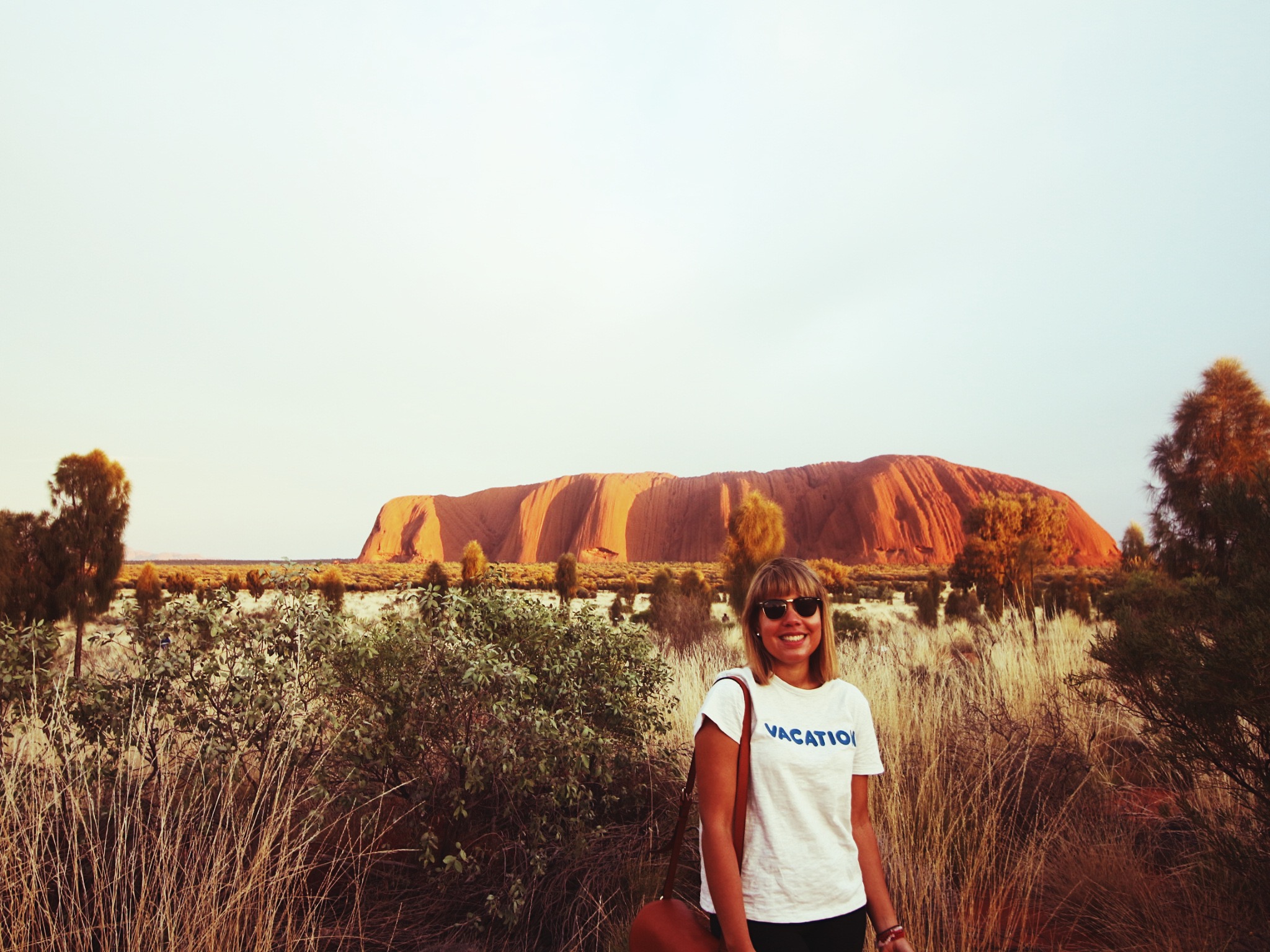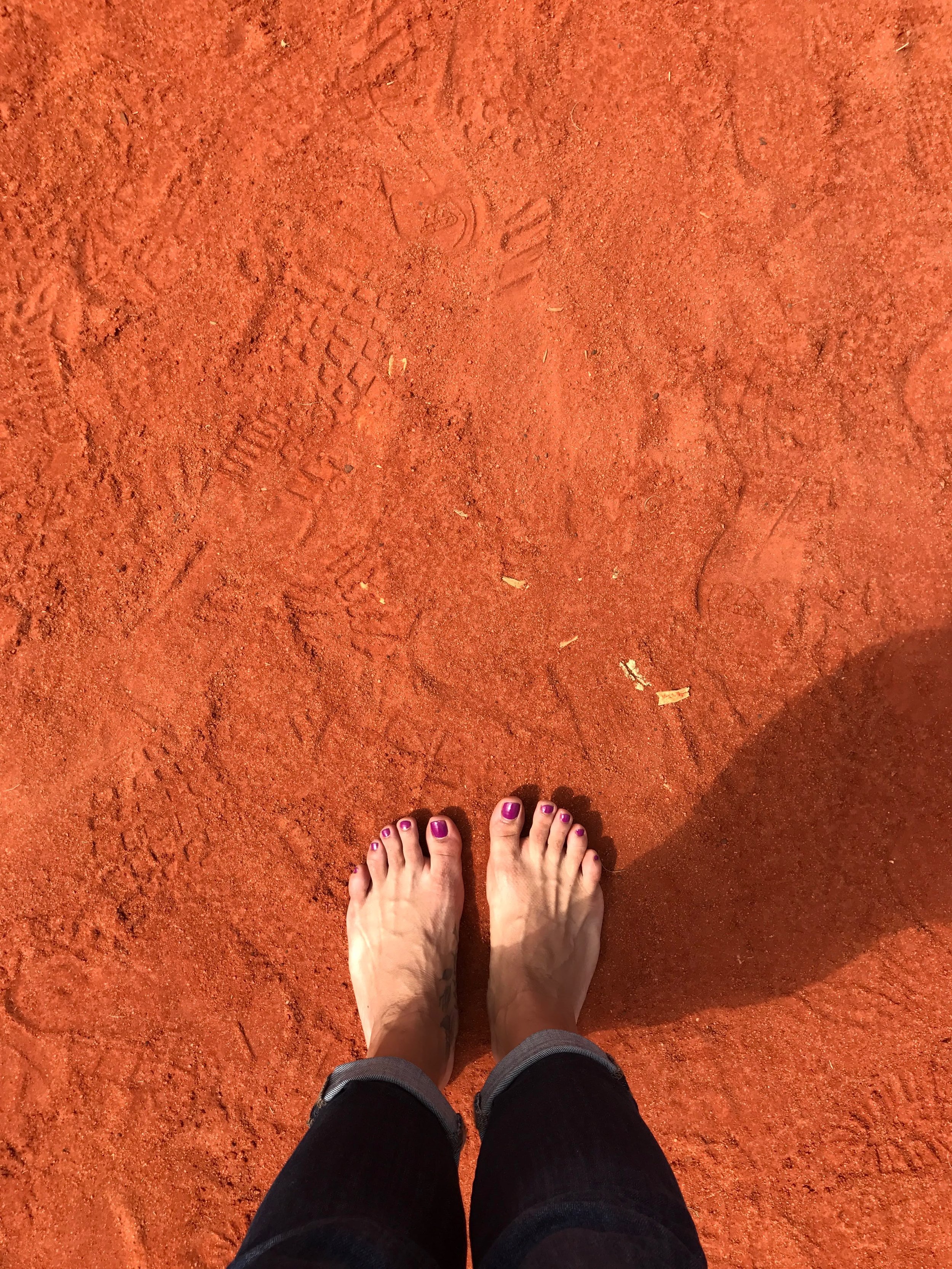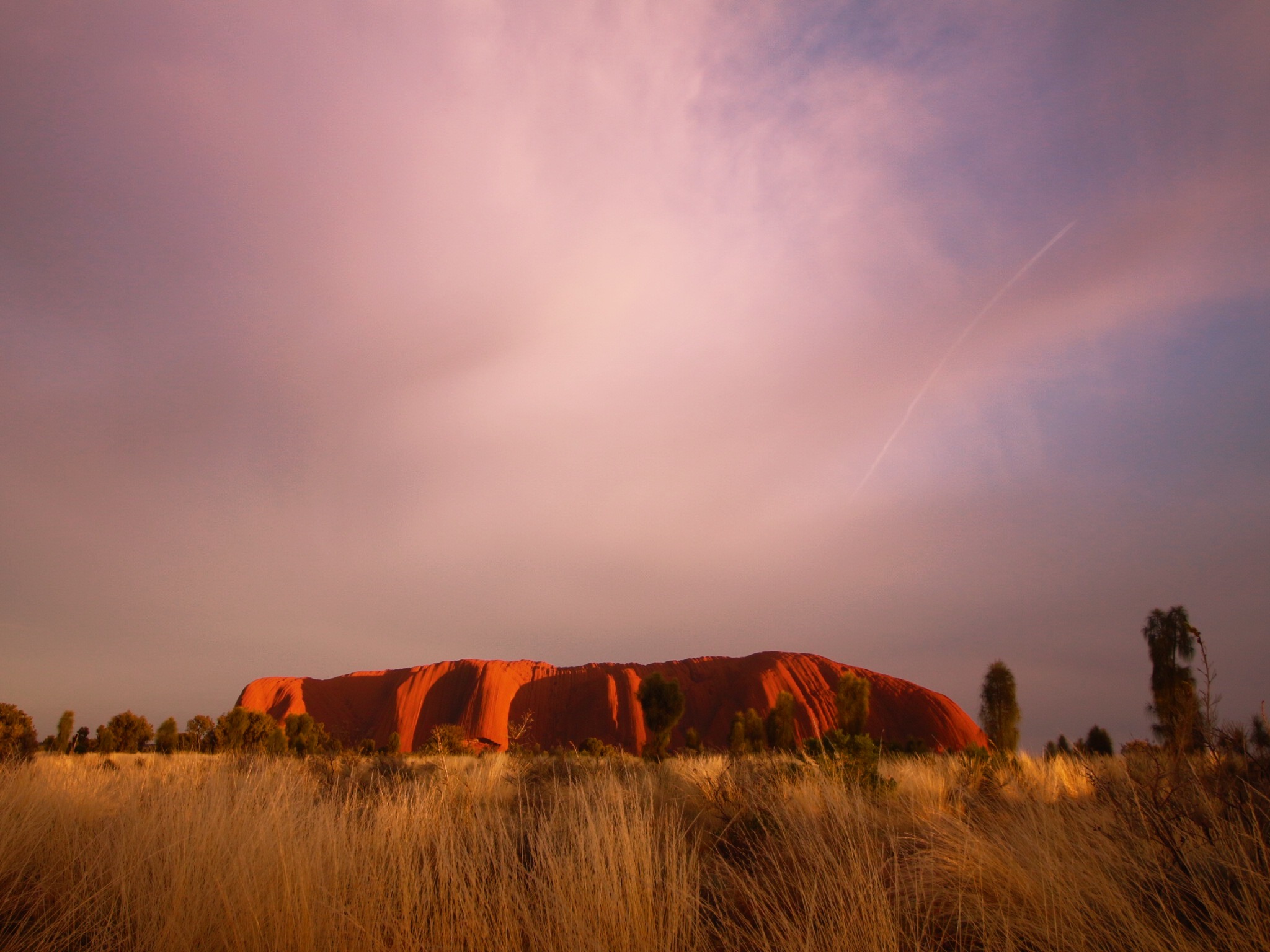4am. I woke up with a start in a hotel room with my closest childhood friend (a.k.a. “best friend 4 eva”). We were thousands of miles away from home in Australia. The trip was a joint celebration of our 30th birthdays. The alarm had gone off to signal us it was time to go.
We were staying at the Sails in the Desert hotel just outside the Uluru-Kata Tjuta National Park and we had signed up for a sunrise viewing of Uluru. We packed ourselves into the tour bus half asleep. It was still dark when we arrived at the viewing area and our guide set up a table with hot chocolate and tea. It was a chilly morning and the hot chocolate felt like a warm hug from within.
We hiked up to a plateau where we stood a few kilometers away from the rock. The darkness was starting to shift and dashes of pink began to splash across the dark blue sky. Any sleepiness we had arrived with was suddenly replaced by a rush of energy and excitement. There is no more beautiful sight on this planet than the iconic landscape of UIuru as the night gives way to the day.
It was not only the beauty of it that overtook me, but the energy. There is an electrifying peace that rises from the bright red ground at this location. It’s a palpable vibrancy that made me feel more connected to the earth than ever.
Uluru, also known as Ayers Rock, is one of Australia’s most iconic natural landmarks. It is located near the center of the country in the Northern Territory region. The red sandstone monolith stands tall at 1,142 ft high on the flat Australian desert, making for a breathtaking scene.
The local aboriginal people, the Anangu, are the traditional owners of Uluru and Kata Tjuta rock formations as well as the land that surrounds them. But it wasn’t until 1985 that Australia’s government returned ownership of the land. Today, the park is managed by the Anangu traditional owners and Parks Australia. It is also recognized by UNESCO as a World Heritage Site.
It’s important to note that Uluru is a sacred place for the local community. Due to its spiritual significance climbing Uluru is disrespectful to the aboriginal culture and traditions. I chose not to climb Uluru out of respect as a guest in Anangu land and because I believe it’s important to preserve the sacred meaning of the location and protect the Anangu traditions.
As of October 26, 2019 climbing Uluru will be officially banned. 34 years after the land was returned to its rightful owners.
Instead of climbing, a way to honor and enjoy this sight is walking around the perimeter and watching the spectacular sunrise. I chose to stand barefoot at one of the viewing points back at the Resort, in a sort of standing meditation also known as Earthing.
As we closed our day inside the national park, we saw the sun set over the rock. My friend and I made a pact to return here to celebrate our 80th birthdays.
Ayers Rock Resort Information
& Sails in the Desert Hotel
Website:
www.ayersrockresort.com.au
Address:
163 Yulara Dr, Yulara NT 0872, Australia






